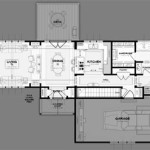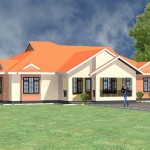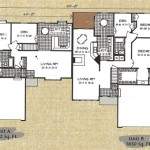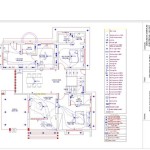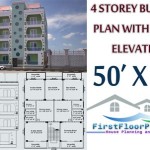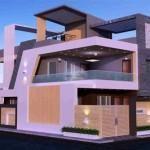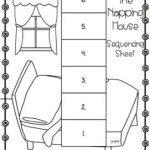Architectural Small House Plans: Maximizing Space and Style
The increasing focus on sustainable living, coupled with rising land costs, has led to a surge in interest in architectural small house plans. These plans prioritize efficient use of space, innovative design, and cost-effectiveness, offering a viable alternative to larger, more conventional homes. Small house plans are not merely about downsizing; they represent a conscious choice to live more intentionally and minimize environmental impact while still enjoying a comfortable and aesthetically pleasing living environment.
Architectural small house plans encompass a wide range of styles, from modern minimalist designs to cozy cottage-style dwellings. The key is intelligent design that maximizes functionality within a limited footprint. This often involves incorporating multi-functional spaces, clever storage solutions, and vertically oriented designs to optimize the available area. The goal is to create a space that feels larger and more livable than its square footage might suggest.
Key Considerations in Small House Design
Designing a small house requires careful consideration of several key factors. These factors influence the overall livability and functionality of the space and must be addressed early in the planning process to ensure a successful outcome. These include space optimization, natural light and ventilation, and material selection.
Space Optimization: This is perhaps the most critical aspect of small house design. Every square inch must be utilized effectively. This involves employing strategies such as open floor plans, built-in storage solutions, and multi-functional furniture. Open floor plans eliminate unnecessary walls, creating a more spacious and airy feel. Built-in storage, such as shelving and drawers integrated into walls or under stairs, maximizes storage capacity without taking up valuable floor space. Multi-functional furniture, such as sofa beds or tables that can be expanded or folded away, allows spaces to be adapted for different uses as needed. Careful planning ensures that every area serves multiple purposes, maximizing functionality within a limited footprint.
Furthermore, considering the flow of movement within the house is crucial for creating a comfortable and functional living space. Pathways should be clear and unobstructed, and furniture should be arranged in a way that promotes easy movement. This can be achieved by minimizing hallways and creating a more open and interconnected layout.
Natural Light and Ventilation: Adequate natural light and ventilation are essential for creating a healthy and comfortable living environment, particularly in small spaces. Large windows and skylights can bring ample natural light into the house, making it feel brighter and more spacious. Strategically placed windows can also provide passive solar heating in the winter, reducing energy consumption. Proper ventilation is equally important for maintaining air quality and preventing moisture buildup. This can be achieved through the use of operable windows, strategically placed vents, and effective insulation. Cross-ventilation, where windows are located on opposite sides of the house, can create a natural airflow that helps to cool the space and remove stale air.
The orientation of the house on the site can also have a significant impact on natural light and ventilation. Orienting the house to maximize solar gain in the winter and minimize it in the summer can help to regulate the temperature and reduce energy costs. Careful consideration of these factors can create a comfortable and energy-efficient living environment.
Material Selection: The choice of materials can have a significant impact on the overall look, feel, and performance of a small house. Light-colored materials can help to make the space feel brighter and more spacious, while durable and low-maintenance materials can reduce the need for repairs and replacements. Sustainable and eco-friendly materials are also desirable, as they can help to minimize the environmental impact of the house. For example, reclaimed wood, bamboo flooring, and recycled content insulation are all sustainable options that can add character and charm to a small house. The choice of materials should also consider the climate and local conditions. Materials that are resistant to moisture, insects, and extreme temperatures are essential for ensuring the longevity of the house.
Interior materials should be considered for their reflective properties and textures. Smooth, reflective surfaces can help to bounce light around the room, making it feel larger and brighter. Textural elements, such as exposed brick or wood beams, can add visual interest and character to the space. A consistent color palette can also create a sense of cohesion and unity, making the house feel more harmonious and well-designed.
Exploring Different Small House Design Styles
Architectural small house plans are available in a wide array of styles, each offering a unique aesthetic and functional approach. From the clean lines of modern design to the rustic charm of cottage styles, there's a small house plan to suit every taste and lifestyle. Here are a few popular design styles:
Modern Minimalist: Modern minimalist small houses emphasize clean lines, simple forms, and a minimalist aesthetic. These designs often feature open floor plans, large windows, and a focus on natural light. The emphasis is on functionality and efficiency, with a minimal amount of clutter and ornamentation. Material palettes are typically neutral, with a focus on natural materials such as wood, stone, and concrete. Modern minimalist designs often incorporate sustainable features such as solar panels, rainwater harvesting systems, and energy-efficient appliances.
The appeal of modern minimalist small houses lies in their simplicity and functionality. These designs are ideal for those who value a clean, uncluttered living environment and appreciate the beauty of simple forms. The emphasis on sustainability also makes them an attractive option for environmentally conscious homeowners.
Cottage Style: Cottage-style small houses evoke a sense of warmth, charm, and coziness. These designs often feature steeply pitched roofs, dormer windows, and a variety of natural materials such as wood shingles, stone, and brick. Interiors typically feature exposed beams, fireplaces, and comfortable furnishings. Cottage-style houses often incorporate elements of nature, such as gardens, porches, and outdoor living spaces.
The appeal of cottage-style small houses lies in their nostalgic charm and connection to nature. These designs are ideal for those who value a warm, inviting, and comfortable living environment. The emphasis on outdoor living spaces also makes them an attractive option for those who enjoy spending time outdoors.
Contemporary: Contemporary small house designs blend modern and traditional elements, creating a unique and stylish living environment. These designs often feature a mix of materials, such as wood, metal, and glass, and incorporate innovative design features such as green roofs, rainwater harvesting systems, and smart home technology. Interiors typically feature open floor plans, flexible spaces, and comfortable furnishings.
The appeal of contemporary small houses lies in their versatility and adaptability. These designs can be tailored to suit the specific needs and preferences of the homeowner, and can be adapted to a variety of different climates and locations. The emphasis on sustainability and technology also makes them an attractive option for forward-thinking homeowners.
Addressing Challenges in Small House Construction
While small house construction offers numerous benefits, it also presents certain challenges that must be addressed during the planning and construction process. These challenges range from navigating building codes to managing storage and ensuring accessibility.
Building Codes and Regulations: Building codes and regulations can sometimes pose a challenge for small house construction, as they may not be specifically designed for smaller homes. Some codes may require minimum square footage for certain rooms or features, which can be difficult to achieve in a small house. It is essential to research and understand the local building codes and regulations before starting the design process. Working with an experienced architect or builder who is familiar with small house construction can help to navigate these challenges and ensure that the house meets all applicable codes.
In some cases, it may be necessary to seek variances or exemptions from certain code requirements. This may involve demonstrating that the small house meets the intent of the code in a different way or that strict adherence to the code would create an undue hardship. Working closely with local building officials can help to facilitate this process and ensure that the small house is built to code.
Storage Solutions: Adequate storage is essential for maintaining a clutter-free and functional living environment in a small house. Built-in storage solutions, such as shelving, drawers, and cabinets, are often the most efficient way to maximize storage capacity without taking up valuable floor space. Utilizing vertical space, such as walls and ceilings, can also create additional storage opportunities. For example, overhead storage in the kitchen or bathroom can provide space for infrequently used items.
Multi-functional furniture, such as sofa beds, storage ottomans, and tables with built-in drawers, can also help to maximize storage space. Careful planning and organization are essential for making the most of limited storage space. Decluttering regularly and only keeping items that are truly needed can help to prevent the accumulation of unnecessary possessions.
Accessibility Considerations: Ensuring accessibility is important for making a small house accessible to people of all ages and abilities. This may involve incorporating features such as wider doorways, ramps, grab bars, and accessible bathrooms and kitchens. Universal design principles, which aim to create environments that are usable by everyone regardless of their age, ability, or other characteristics, can be helpful in designing an accessible small house.
Designing for aging in place is also an important consideration. This involves incorporating features that will allow the homeowner to continue living in the house as they age, such as single-story layouts, easy-to-reach switches and outlets, and slip-resistant flooring. Planning for future needs can help to ensure that the small house remains a comfortable and functional living environment for many years to come.
Small Homes Top 5 Floor Plans Designs For Houses Architecture Design

Pin On One Bedroom House Plans

Tiny House Floor Plans Small

18 Small House Designs With Floor Plans And Decors

House Plans Home Floor Architecturalhouseplans Com

Small House Plans And Design Ideas For A Comfortable Living

Small House Kennedy Residence Houses
Small Homes Top 5 Floor Plans Designs For Houses Architecture Design

New Small House Design 3d Floor Plan By Architectural Rendering Company Los Angeles Usa Syncronia
Small Homes Top 5 Floor Plans Designs For Houses Architecture Design

